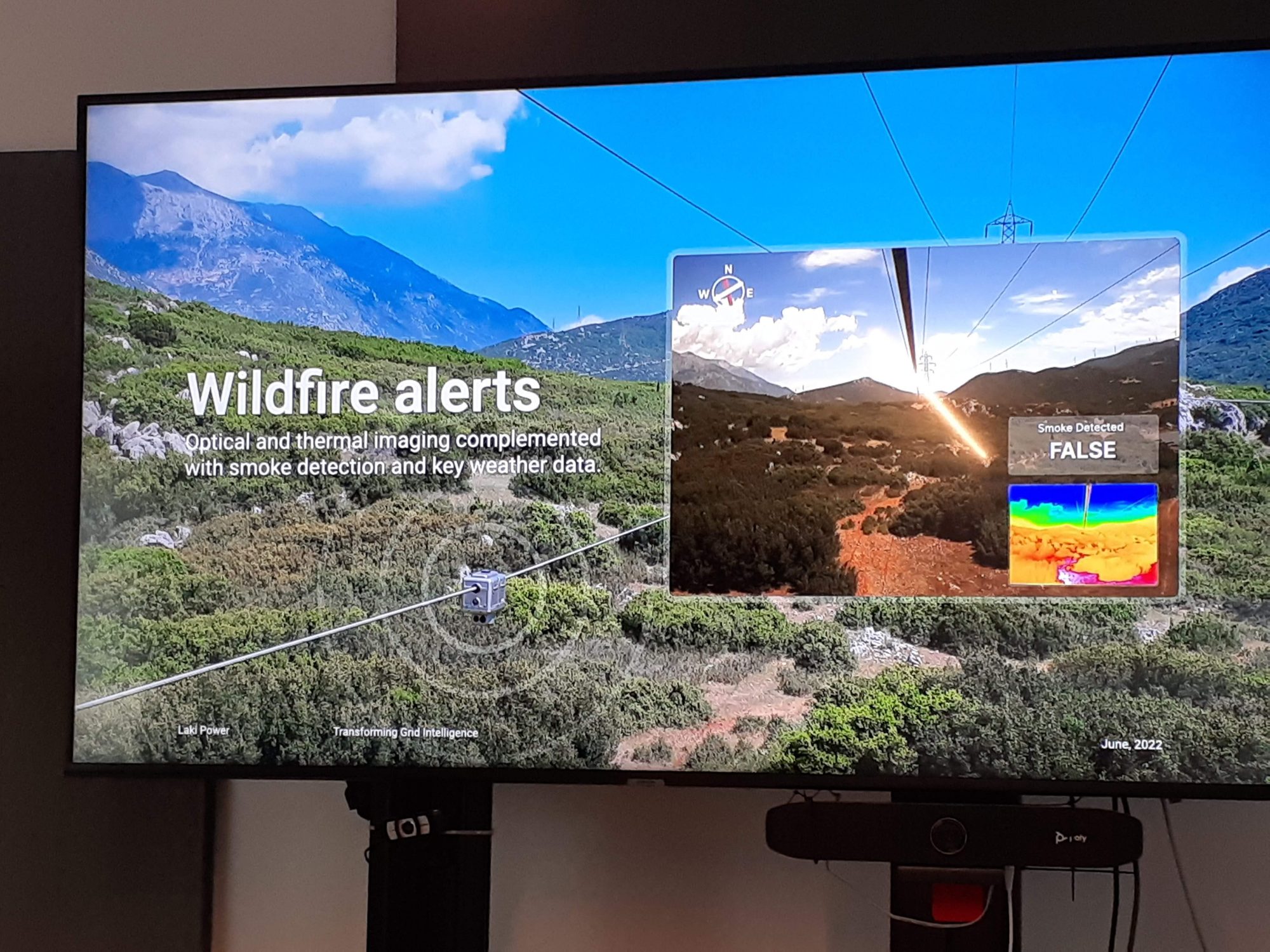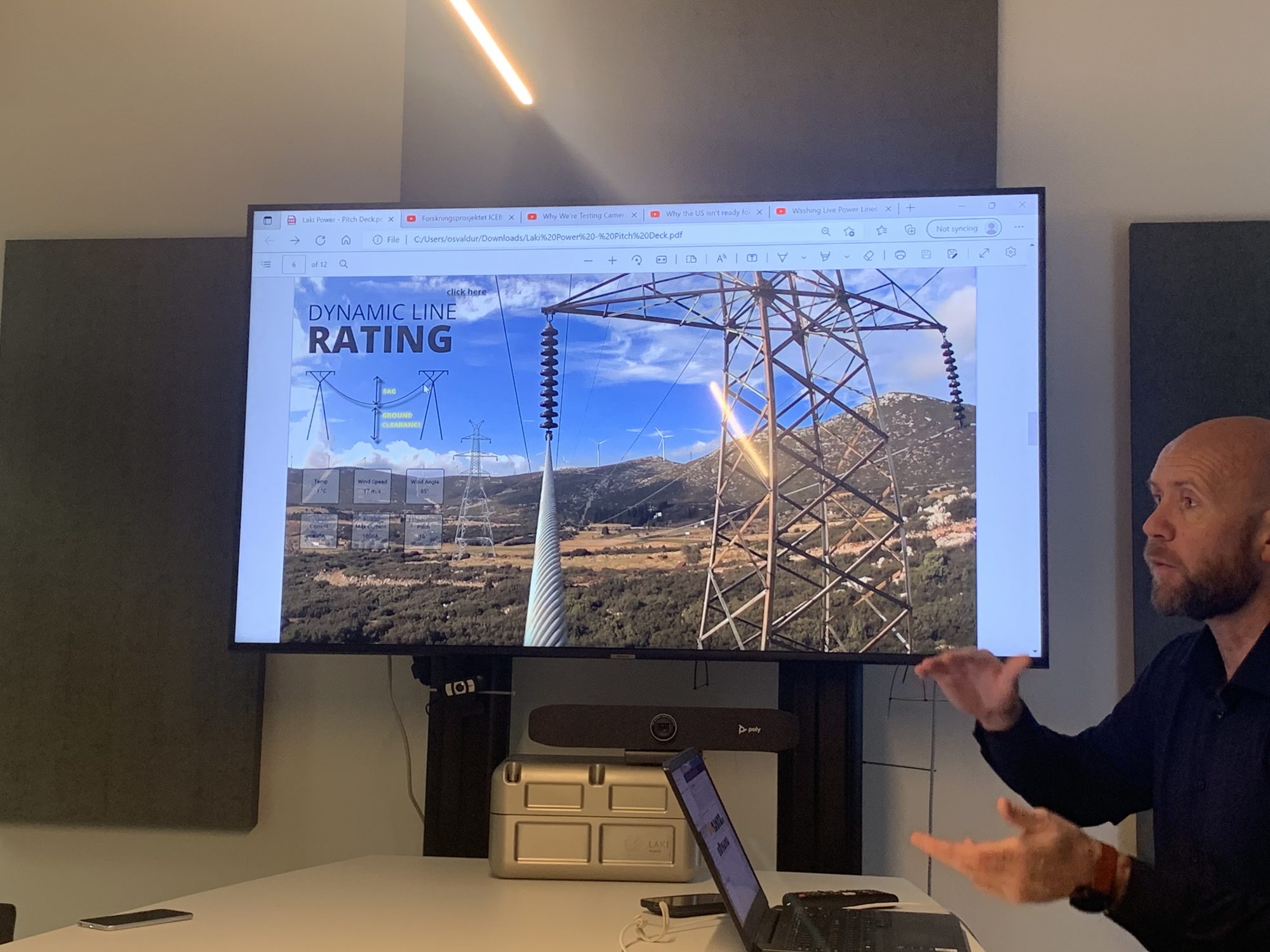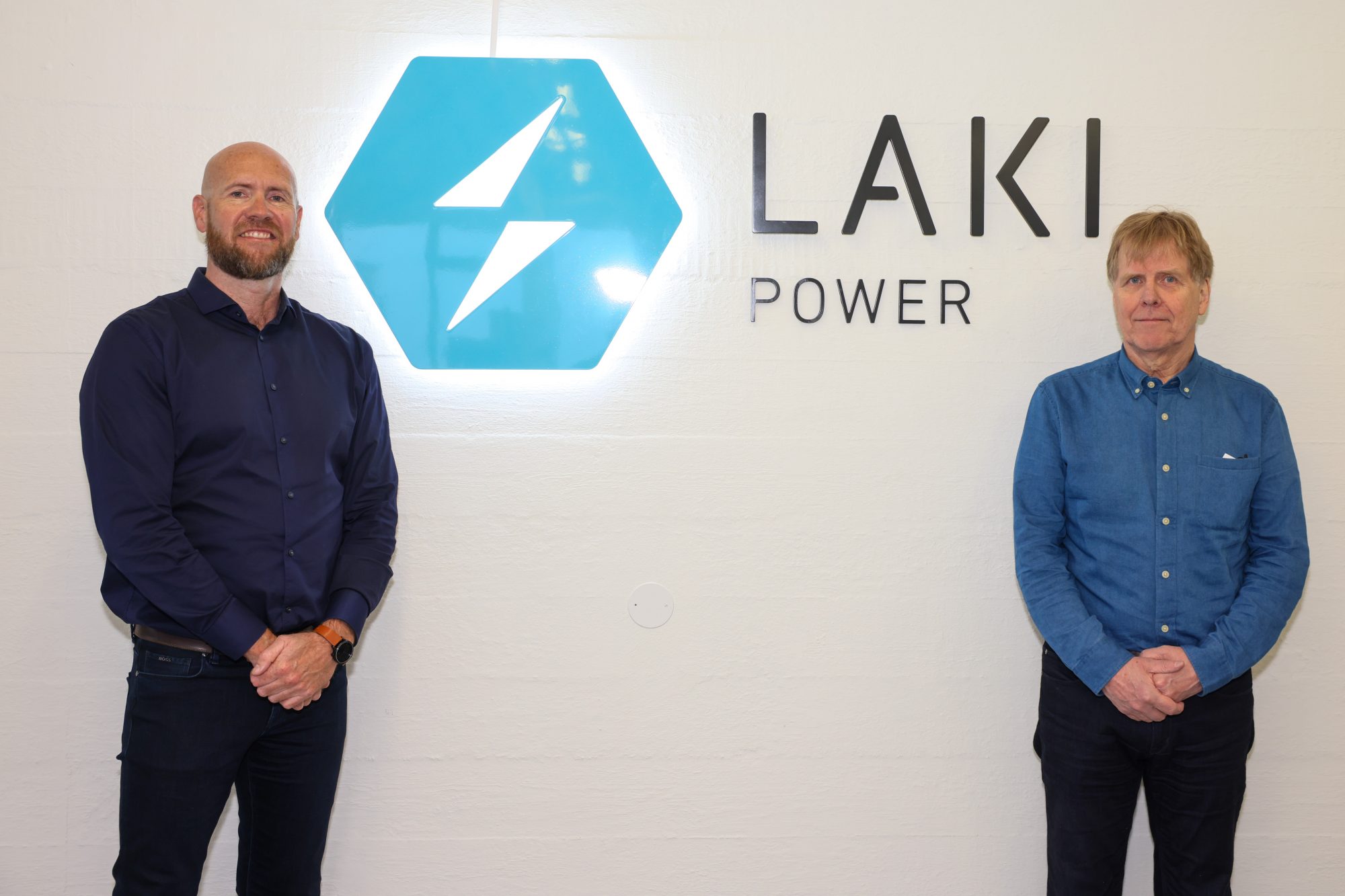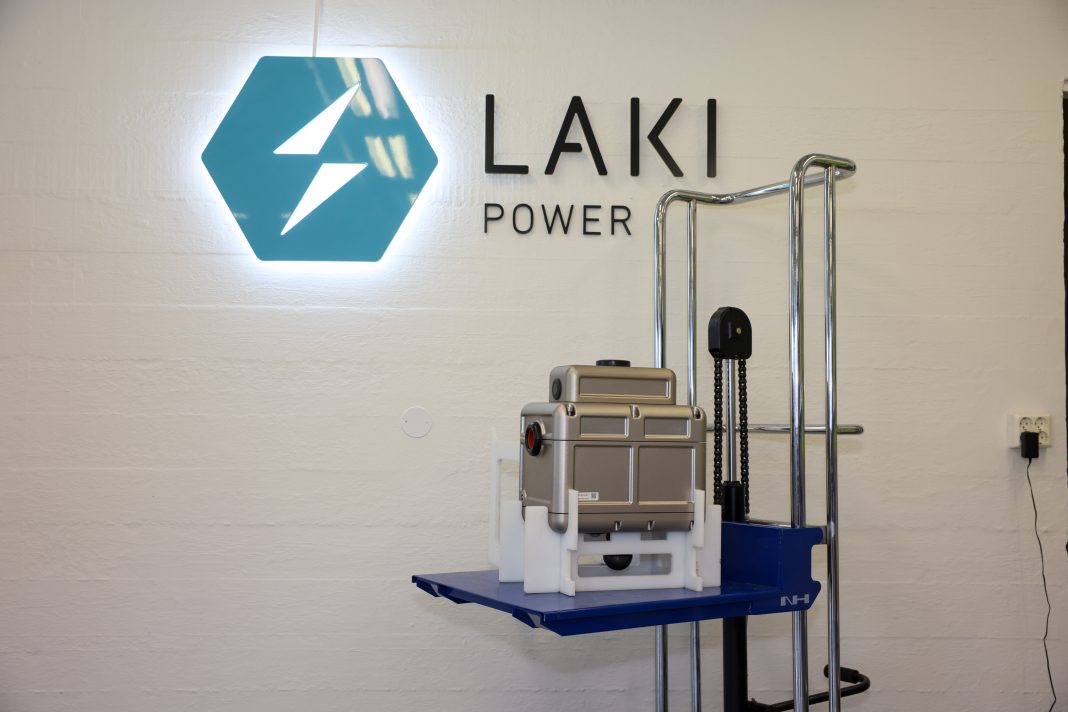Laki Power brings power to remote areas with its climate technology, designed to detect extreme weather before it occurs and deter power outages
Having received €2.1 million in funding from Horizon Europe, Laki Power, an Icelandic national power company, generated climate technology with predictive capabilities to protect power grids in places with extreme weather conditions – deterring power lines from faltering in snow, wildfires and more.
Focusing on critical locations, this unique power-harnessing technology uses cameras, sensors, and solar panels to administer weather events over one hectare away.
As monitoring equipment typically needs a diesel generator or solar power to function, Laki Power’s monitoring stations are clamped on the conductor and generate power using otherwise wasted energy through induction, making them an emission-conscious company innovating around the climate crisis.
Alerts, analytics, and real-time data capabilities
The mission of Laki Power is to provide power grid operators with climate technology solutions for monitoring, analysing, and optimising their grid infrastructure.
They prioritise power grid conditions like icing on power lines, wildfires, line galloping or surface contamination, which can frequently cause power outages and permanent damage to energy infrastructure.
They develop real-time insight into power line health, enabling power grid operators to react quickly and improve grid design using renewable energy, like wind and solar. With this real-time weather data, power grid operators can use dynamic line ratings to meet excess energy demand.
Based on live measurements of events on icing, wildfire, galloping, vibration or salinity, Laki Power develops prototype models on power grids to cover large remote areas providing the perfect opportunity to monitor these events.
For instance, The LKX-SURV monitoring station is equipped with thermal and optical cameras as well as a smoke detector for monitoring wildfire risk. This data then generates an analytics report with a wide range of data: ground clearance, ampacity, conductor tension and temperature, conductor current levels, full macro weather report and more.

Power harvesting enables real-time monitoring of the environment
- LKX-MULTI: This is a line-powered monitoring station equipped with a triple camera system, multiple line sensors and a complete weather station.
- LKX-SURV: This model grants optical and thermal imaging combined with local weather data, this specialises in surveillance and early detection of wildfires around power lines.
- LKX-DRONE: Finally, the autonomous drone operates in remote areas with highly efficient drone charging stations to check on the power lines and monitor them.
Ósvaldur Knudsen, the CEO of Laki Power, said to Open Access Government: “After the proof concept in 2019, the pilot project for this began in 2020, with three monetizations here in Iceland and two in Norway. Those were the initial projects. This year, in April and May 2022, we started three new pilots in Greece, Turkey and Canada. In Greece, we put up two monitoring stations, basically detecting wildfires.
“As there is an increasing amount of wildfire problems in various locations around the world, there are also many ways to basically detect wildfires and tackle that problem”
“As there is an increasing amount of wildfire problems in various locations around the world, there are also many ways to basically detect wildfires and tackle that problem. We thought that our applications would have some strengths – especially since we are able to put up monitoring sessions on conductors in environments like this.”
“This hardware is a design that we placed in the middle of the conductor that has an optical and thermal camera.”

Ålvik mountain, Norway: a power grid case study
The Ålvik Mountain in Norway on the Norwegian power grid was used as a location in the R&D (research and development) magazine in 2019 for a project called Icebox. As it is a northern location, there is a lot of icing and snow in the wintertime – to the extent that icing on this line can eventually lead to the towers and the whole infrastructure being pulled down, especially in combination with wind and snow.
Therefore, this location was pinpointed as needing monitoring equipment for this kind of recurrent icing problem. Laki Power equipped the mountain with monitoring equipment with sensors for measuring and detecting weather as a test span, which was used to judge what weather they were dealing with.
The device is a combination of solar panels on fuel cells to conduct power. Most of the locations are remote – especially in the Norwegian mountains – and therefore are only accessible by helicopter. So, the team needed to get all equipment to these distant places – which also required refuelling the diesel generator and the fuel cell.
This is reasonably complex as there are a lot of breaking points in these locations, but some of Laki Power’s fastest installations have been completed in just 15 minutes.
Laki Power designed its climate technology to have different sensors to measure the salinity and atmospheric conditions. They have a wind sensor, a line sensor and an accelerometer inside. When Icing conditions are occurring, there’s a certain humidity which is generally above 80%. Based on the temperature range gauge, the device alerts users when weather conditions are affecting the power lines.
The accelerometer gives information about the movement of the conductor
Power lines can gallop – almost like a jump rope – in certain conditions. The snow can add to those kinds of conditions, but you can also have them in warmer conditions if you have the proper kind of wind at an angle. Therefore, the accelerometer in the device can alert the power station with information about the conductor’s movement. This real-time data monitoring has already been used in Australia and Canada.
Damages can often result in hundreds of millions of dollars per day. So with that, they decided to construct a mechanism to measure the difference in weather.
“Wide open prairies expose our infrastructure to the weather, too. So the infrastructure needs to be protected from the natural geography. We looked at: what is that weather? How can we measure it, and then how can we design for it?” CTO Óskar H. Valtýssonsaid.
“The infrastructure needs to be protected from the natural geography”
If there is a lot of vibration when a line is galloping, the high voltages can send a reaction, and Laki Power can send their crews to check on the maintenance of the lines. There are often physical pieces in the infrastructure that are damaged after some severe weather events, but Valtýsson notes that these are vital to the design process: “If you don’t have any faults in the measuring devices, then you won’t know how to rebuild them.”
They call it “Dynamic line rating”, which is the optimisation problem of how much current they can move through the line. The current will heat the conductor, lowering the conductor, which they don’t want, as the conductor going too close to the ground can affect safety. The conductor can also damage itself if it sags too much.
So, the current is heating, the atmospheric temperature is heating the line, solar radiation, what’s cooling it? Well, one of the biggest factors is wind is cooling it and the wind’s ankle. All of these factors together make up this optimization problem. A huge issue has been resolved around how much current can be moved through the line without breaking these thresholds.
Many power lines are built in remote, vulnerable places
In the US, renewable energy sources like solar and wind are being built more now in pursuit of cleaner energy. These power lines are predominantly in the central part of the US. However, all of the consumers for energy are on the coast. This entails the US must build transmission lines which need to be able to track local weather data.
Laki Power has looked into this issue, analysing the local weather data that gives accurate wind data, for instance, in particular US valley locations. They proceed to measure salinity or sensor for salinity or pollution. In their US models, however, they also include insulator chains, which are insulators that identify transmission winds, so the current doesn’t go up into the steel of the tower and down into the grounds, potentially causing an outage. Measuring and keeping track of pollution with these sensors is vital.
In coastal areas, this kind of issue is frequent and has even been experienced in Iceland, where the company began.
The evolution of this climate technology
Another design in Greece includes its own optical, thermal camera. This optical imaging function in the devices faces the direction of the valley to detect smoke, with an internal trigger warning when the heat threshold has been surpassed.
These basic alarms occur with any signs of a fire. To further this design, the company are introducing moving parts, using industrial gears to make it move every 90 degrees to give it a full view. This imaging also detects the direction the winds are blowing, as well as the wind speed. Now they are looking toward where it is going to move.
Additionally, if the device is able to move, it will reduce any risk of trees leaning on the power lines and causing fires. This continuous power source may increase the capacity for already advanced weather data and climate technology.
“The power hosting technology in itself can be applied to other areas in the future.”
“We’re taking the first steps of going into a commercial relationship in Norway and Iceland with this technology, but not commercialised. These are pilots where we’re doing testing. We’re getting a feel for the technology and how to use it, trying to raise funds to grow the company so we can start moving around the world. I think that’s pretty much it.” Ósvaldur Knudsen summarises.
“The power hosting technology in itself can be applied to other areas in the future.”












